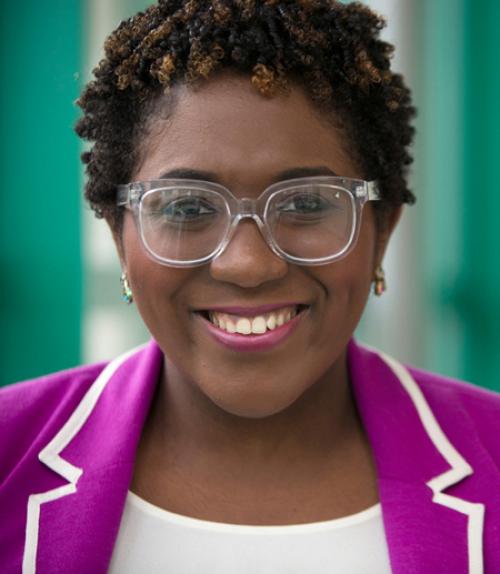When Samantha Sheppard, assistant professor in the Department of Performing and Media Arts, contemplated the movies she would include in a fall film and speaker series on Black cinema, she had a tough time choosing only five.
“When we think about American cinema, we often push African American cinema out of that frame,” she said. “But African Americans have been in this game for a long time. If you want to know American cinema, and American history for that matter, you have to know the history of African American cinema.”
Sheppard is an expert in African American cinema and she thinks it’s a shame that most people have only seen Do the Right Thing or one of Tyler Perry’s films (though she’s a big fan of Perry and just edited a book of essays about his work).
She fell in love with African American cinema as an undergrad at Dartmouth and then, as a grad student at UCLA, Sheppard worked on a project to document the work of the L.A. Rebellion, a group of African and African American film students who entered the school in the late 1960s and made films that were responsive to communities of color.
“The LA Rebellion preservationists were doing oral histories, actually preserving prints and hosting film screenings every weekend,” she said. “Professors were encouraged to create opportunities for the department and the community to engage with cinema and I wanted to continue that in my first year here at Cornell.”
The earliest film screened as part of Voices and Visions in Black Cinema series at Cornell Cinema was a 1919 movie, Within Our Gates, but African American films, Sheppard learned from her mentor Allyson Nadia Field, are on record from at least 10 years earlier, when the Hampton and Tuskegee institutes created films as part of campaign materials. Films in the series progress chronologically, with the last film, “Dope,” showing Nov. 19-21, released this year.
Voices and Visions also includes a speaker series with scholars who are “creating amazing work” on African American cinema, Sheppard said.
“Throughout the history of African American cinema, just as in all cinema, there are themes repeated, but with a difference,” Sheppard said. “Themes of cultural affirmation and resistance and narratives of uplift.”
As her students dissect each film, Sheppard encourages them to consider many questions: What were the social forces that created this text? Who was the director and what were they trying to accomplish? What is the audience experiencing socially and historically at this time?
“I want them to situate each text within a context, not because the films are reflections of reality but because they’re engaged in a social landscape,” she said.
While Sheppard is focused on teaching two new classes and her film series, she also is at work on a number of writing projects.
Her essay "Bruising Moments: Affects and the L.A. Rebellion" was included in “The L.A. Rebellion: Creating a New Black Cinema” (University of California Press, 2015). Her essay "She Ain't Heavy, She's Madea: The Tyler Perry Discourse and Black Cultural Production" is included in the forthcoming edited collection Black Cinema Aesthetics Revisited (Intellect Press) and a collection of essays on Perry’s work, “From Medea to Media Mogul,” which Sheppard edited, will come out next spring.
She is also writing a book manuscript, “Sporting Blackness: Race and Embodiment in Sports Films,” which explores how race plays a central role in sports films' generic representations.
“There’s a lack of critical arguments about race in this genre,” she said. “My interest is in thinking about where black bodies are on screen en masse and how those black bodies can signify various histories.”
When Sheppard goes to the movies herself, she is always critiquing, but often entertained. She goes to see everything, from high art indie films to The Perfect Guy.
“When I go to the movies, I feel a bit like a food critic,” she said. “I have a meal and it’s often problematic. I tasted a little too much of this or that or that was a really repressive representation of black women within a pretty enjoyable text.
“I also just go to see whether the film makes me feel good. Because I go to so many, most movies are forgettable, so I’m looking for a movie that will tell me my life has been changed. And I almost always know that instantly, within the first 30 seconds.”




